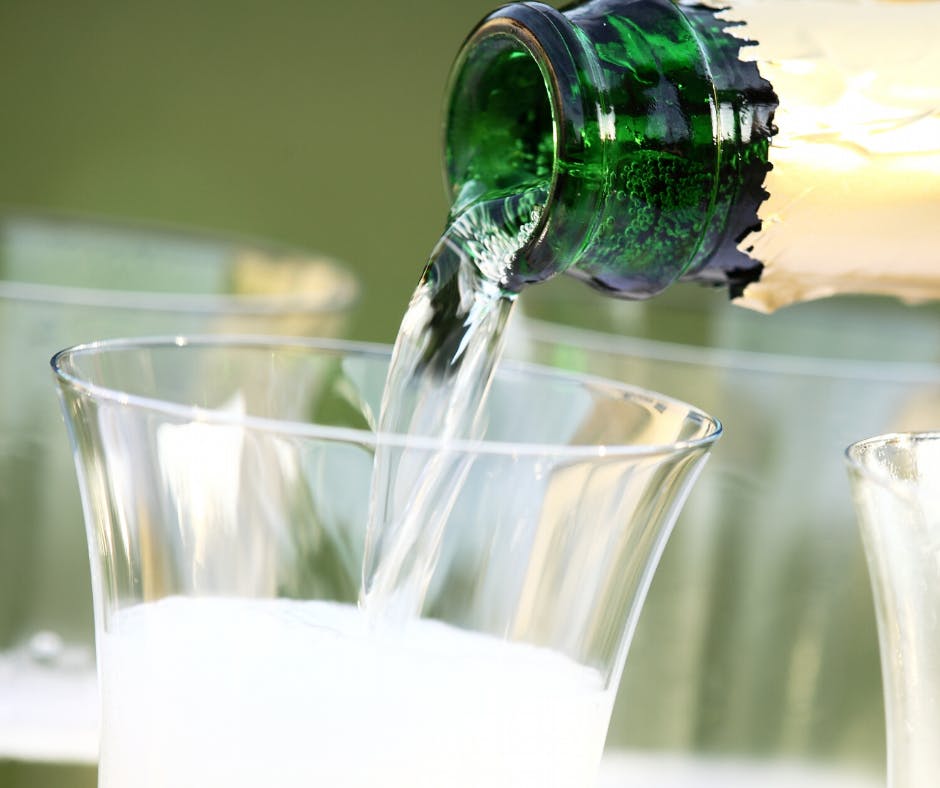Sparkling Wine—Holidays & Everyday

Sparkling wines were invented by French monks some 500 years ago. While utilizing the same grapes as many still wines, the process is a bit different. As any wine ferments, yeast convert sugar to alcohol and emit carbon dioxide as a byproduct. With still wine, fermentation occurs in a barrel or tank, so the CO2 dissipates. In contrast, sparkling wines are fermented in sealed systems (pressure tanks or glass bottles). The resulting carbon dioxide “dissolves” into the wine, only to be released in the form of cheerful bubbles upon opening.
The pinnacle of sparkling wines, French Champagne, is famous for the complex flavor and delicate effervescence that results from a second yeasty fermentation in the bottle. Other sparkling wines, like delightfully crisp Italian Prosecco, are fermented in the barrel or tank and then bottled with their bubbles, but without a second fermentation. Still others are artificially pumped full of carbon dioxide, just like soda, resulting in a harsher, more volatile bubble. Not surprisingly, those are the least expensive, but also the least respected.
The amount of labor, degree of delicacy, and regional pedigree of any sparkling wine is directly related to its availability and price. True Champagne, produced only in the tiny northern-French region of the same name, has such name recognition and worldwide demand that its price puts it out of reach of most for daily drinking. Happily, some non-Champagne wines like Spanish Cava and French Crémant mimic this “traditional method” of preparation, resulting in stunningly similar results, but at a fraction of the cost. In other words, there are so many lovingly-prepared, high-quality alternatives out there, one should never be without bubbly in the fridge.
There's pink too? Just when we thought sparkling wine couldn’t be any more festive, we encounter sparkling rosé. Like still varieties, these rosy sparklers are left to rest on the grape skins to absorb color, flavor, and structure. Possessing round flavor and vibrant color, sparkling rosé simply cannot be beat on the “wow” scale.
Almost no wine on earth pairs better with food than sparkling wine of any kind. That is because crisp acidity and “scrubbing bubbles” clean the palate with every sip, making each bite taste like the first. Nuanced flavor development means that bubbly will enhance other flavors without overpowering them. Sparkling wines can range from neutral to full-bodied, from white to pink to red, from completely dry to quite sweet. This means that various well-chosen bubblies can carry you through an entire meal, from delicate starters to heartier fare to dessert.
Regardless of style or pairing partner, sparkling wines must always be served chilled. Tall, slim flutes are ideal for sipping, as they keep bubbles contained and prevent sloshing. But I will admit that there is nothing more devil-may-care than drinking bubbly from a wide-mouth coupe glass. I urge you to try it at least once.
This holiday season, don't wait until New Year's Eve's Champagne toast for your first glass of bubbly. Consider sparkling throughout the season (and throughout the year) by exploring Proescco, Cava, and Crémant too.
Want to learn more? Sign up for our Dec 15th class on Bubbly Wines & Bloomy Cheeses.
